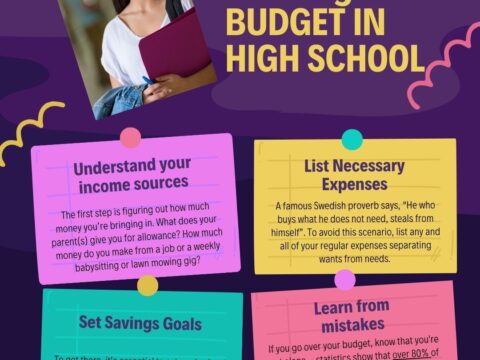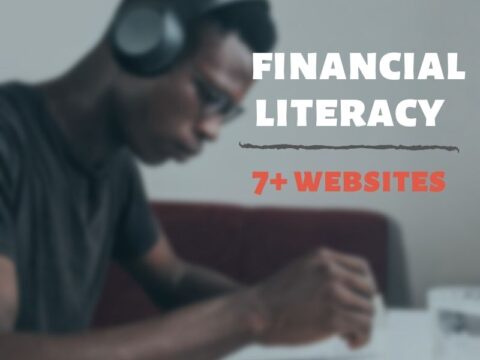Last summer, I helped my niece create a cookie stand. She learned not only about baking but how to budget for supplies, manage earnings, and communicate with customers, which taught her money management while boosting her confidence in handling real-life business scenarios. These are the soft skills associated with financial literacy. The Ask a Tech Teacher team has put them together into an article to remind students–and teachers what students should know when they leave high school:
Preparing Students for Future Careers with Soft Skills Training on Financial Decisions
Teachers hold many responsibilities outside regular education. These responsibilities include imparting knowledge and equipping our students with practical life skills beyond textbooks and exams. Financial literacy is one critical area that lies under our purview.
In today’s rapidly evolving job market, where our students can earn online while still in school, imparting these skills is more crucial than ever, and we must teach our students how to manage money effectively and make informed financial decisions.
So, how can we prepare our students for future financial stability? Let’s explore some innovative strategies below.
1. Hypothetical Small Businesses: From Idea to Execution
Imagine a classroom buzzing with entrepreneurial energy where students develop and execute small business ideas.
After they brainstorm business ideas, guide them to create business plans and simulate the launch of their small enterprises. This project-based approach fosters creativity and jones essential financial skills like the following:
- Budgeting: Your students will learn how to allocate business resources wisely; this includes creating a feasible startup cost and working out the marketing expenses and operational overheads. They will grapple with trade-offs real entrepreneurs grapple with; for example, they may have to do in-house marketing and direct the marketing budget to additional stock when demand is high.
- Cash flow management: As their “businesses” operate, your students will track income and expenses. Here, they may encounter cash flow challenges like delayed payments or unexpected costs, which will require them to strategize and prepare for such incidents.
- Profit and loss: Your students will also learn how to calculate profits and losses. Here, they will learn how to streamline their business to minimize losses by minimizing operational costs, switching suppliers, dropping low-moving items, and using other crucial business strategies.
2. Teaching Them About Different Types of Loans By Stimulating An SBA Loan
After you get the hypothetical small businesses going, the next financial lesson to introduce includes scaling their businesses using different financing methods. That includes introducing your students to the world of loans, specifically Small Business Administration (SBA) loans.
The first step is defining what they are. SBA loans are facilitated by approved SBA lenders and backed by the U.S. Small Business Administration. They allow small businesses to access larger loan amounts, benefit from extended repayment terms, and secure lower interest rates. Explain to them the pros and cons of SBAs compared to other loans.
Next, walk your students through getting an SBA loan and focus especially on giving them a clear overview of SBA loan requirements.
Here are a couple of things to cover:
SBA Loan Basics
Explain the purpose of SBA loans and discuss eligibility criteria, loan terms, and repayment schedules. The eligibility requirements for businesses seeking assistance from the Small Business Administration (SBA) include the following:
- Business type: The business must be for-profit.
- Geographic scope: It should operate within the United States or its territories.
- Financing limitations: The business must be unable to secure financing through other non-government means (excluding personal funds) as of August 1, 2023.
- Equity requirement: Sufficient equity is necessary.
- Size criteria: The business must meet the SBA’s definition of a “small business.”
- Eligible industry: The business should operate in an eligible industry.
- Repayment ability: Demonstrating the ability to repay the loan is essential, considering credit score, earnings, and equity or collateral.
Loan Application Process
Your students can use their businesses to seek out hypothetical SBA loans. They can fill out the loan application forms while considering factors like creditworthiness, collateral, and business viability.
While doing this, they can also engage in risk assessment as you encourage them to think critically. What if their hypothetical business faces economic downturns? How will they repay the loan?
3. Soft Skills Training: Go Beyond Numbers and Formulas
Financial literacy isn’t just about crunching numbers; it’s also about mastering soft skills. Core soft skills ensure that a business and brand are well received. These soft skills include problem-solving skills, teamwork, and effective communication.
You can create practical scenarios for each soft skill you want them to learn and have your students roleplay; for example, to help them develop better communication skills, you can have them:
- Pitching ideas: Teach students to articulate their business concepts persuasively and confidently. This is important because whether they’re courting investors or negotiating terms, communicating effectively and using the correct language and mannerisms will be instrumental to their business success.
- Client interactions: How businesses present their product to the general public is vital to ensuring brand receptiveness. You can teach this by roleplaying client meetings and teaching your students how to explain financial options to potential investors and simplify complex terms and corporate jargon.
4. Introduce Them To Business Resources: Guiding Students Toward Financial Wisdom
Introduce students to reputable business resources. Websites like the Small Business Administration (SBA) provide loan requirements, eligibility, and application process guidelines.
Kick things up a notchy by introducing financial literacy workshops where you invite guest speakers from your community – financial advisors, bankers, or successful entrepreneurs – to share insights. Their real-world stories will resonate with students.
Endnotes
By blending project-based learning, soft skills training, and practical resources, we can empower our students by equipping them with key skills they require to be financially competent adults. They’ll grasp financial concepts and develop the resilience, adaptability, and confidence needed to make good financial decisions.
So, let’s nurture their financial skillset, one budget, one loan simulation, and one entrepreneurial dream at a time. After all, these skills aren’t just for the classroom; they’re for life.
Here’s the sign-up link if the image above doesn’t work:
https://forms.aweber.com/form/07/1910174607.htm
Copyright ©2024 askatechteacher.com – All rights reserved.
“The content presented in this blog are the result of creative imagination and not intended for use, reproduction, or incorporation into any artificial intelligence training or machine learning systems without prior written consent from the author.”
Jacqui Murray has been teaching K-18 technology for 30 years. She is the editor/author of over a hundred tech ed resources including a K-12 technology curriculum, K-8 keyboard curriculum, K-8 Digital Citizenship curriculum. She is an adjunct professor in tech ed, Master Teacher, webmaster for four blogs, freelance journalist on tech ed topics, contributor to NEA Today, and author of the tech thrillers, To Hunt a Sub and Twenty-four Days. You can find her resources at Structured Learning.






































